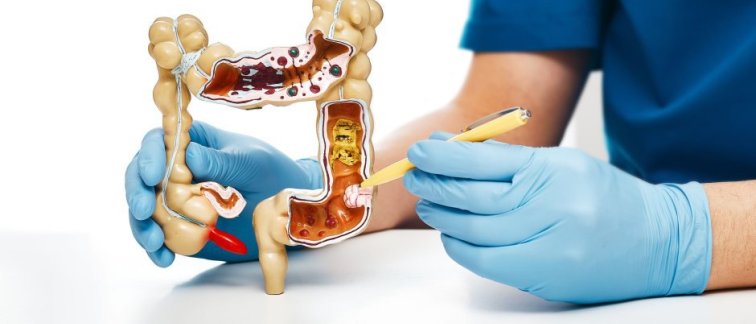Published in the Lancet eClinicalMedicine, a research team led by Prof. Evelien Dekker has now gained new insights into CRC risk according to polyp subtype. By analyzing high-quality data from the Dutch CRC screening program, the team found that individuals with a subtype of polyp known as ‘serrated’ polyps had a higher risk of developing CRC (hazard ratio 1.70) over the next three years. That risk increased if adenomas (benign epithelial tumors) were also present (hazard ratio 2.00). The hazard ratio for patients with only adenomas was 1.22, compared to patients without polyps. First author David van Toledo: “In scientific research and guidelines, attention was mostly focused on CRC-risks after finding adenomas. Now we know that high-risk serrated polyps are also highly relevant.”
The research team, which includes physician Joep IJspeert and PhD student Nanette van Roermund, will continue to conduct follow-up research into the relevance of serrated polyps, partly with funding from a recent KWF grant. They will also look at whether risk estimates remain the same if participants are followed for longer than an average of 3 years.
KWF Funding: ‘Post-coloscopy Colorectal Cancer: What are we missing?’
Little is known about the development of ‘post-colonoscopy colorectal cancers’ (PCCRCs). However, these tumors likely develop from intestinal polyps, adenomas, or serrated polyps (SP) that were not seen or were not fully removed during the previous colonoscopy. It is also unclear whether the type of PCCRCs with the worst prognosis - those arising from serrated’ polyps (SP) - occurs more frequently in patients who have been treated by an endoscopist with a low SP or adenoma detection rate.
During this KWF-funded research project our team will address two questions:
- What are the clinical and histopathological characteristics of PCCRCs and do these cancers occur more often from SP or from adenomas?
- What is the most common cause of PCCRCs? Is the quality of endoscopists in the
detection of adenomas and/or SP related to the occurrence of PCCRCs with the
worst prognosis?
The research will connect the PCCRC occurrences registered in the national cancer
registration with colonoscopy data from the colorectal cancer screenings
program in the Netherlands to find answers in order to improve education and
guidelines for CRC screening by colonoscopy.
For more information, contact Evelien Dekker, or read the publication:
Van Toledo, D.E.F.W.M., et al. (2023) Colorectal cancer risk after removal of polyps in fecal immunochemical test based screening. eClinicalMedicine, Volume 0, Issue 0, 102066. https://doi.org/10.1016/j.eclinm.2023.102066
People involved at Amsterdam UMC
David van Toledo
Nanette van Roermund
Joep IJspeert
Evelien Dekker
Part of this article was published previously in Dutch.

